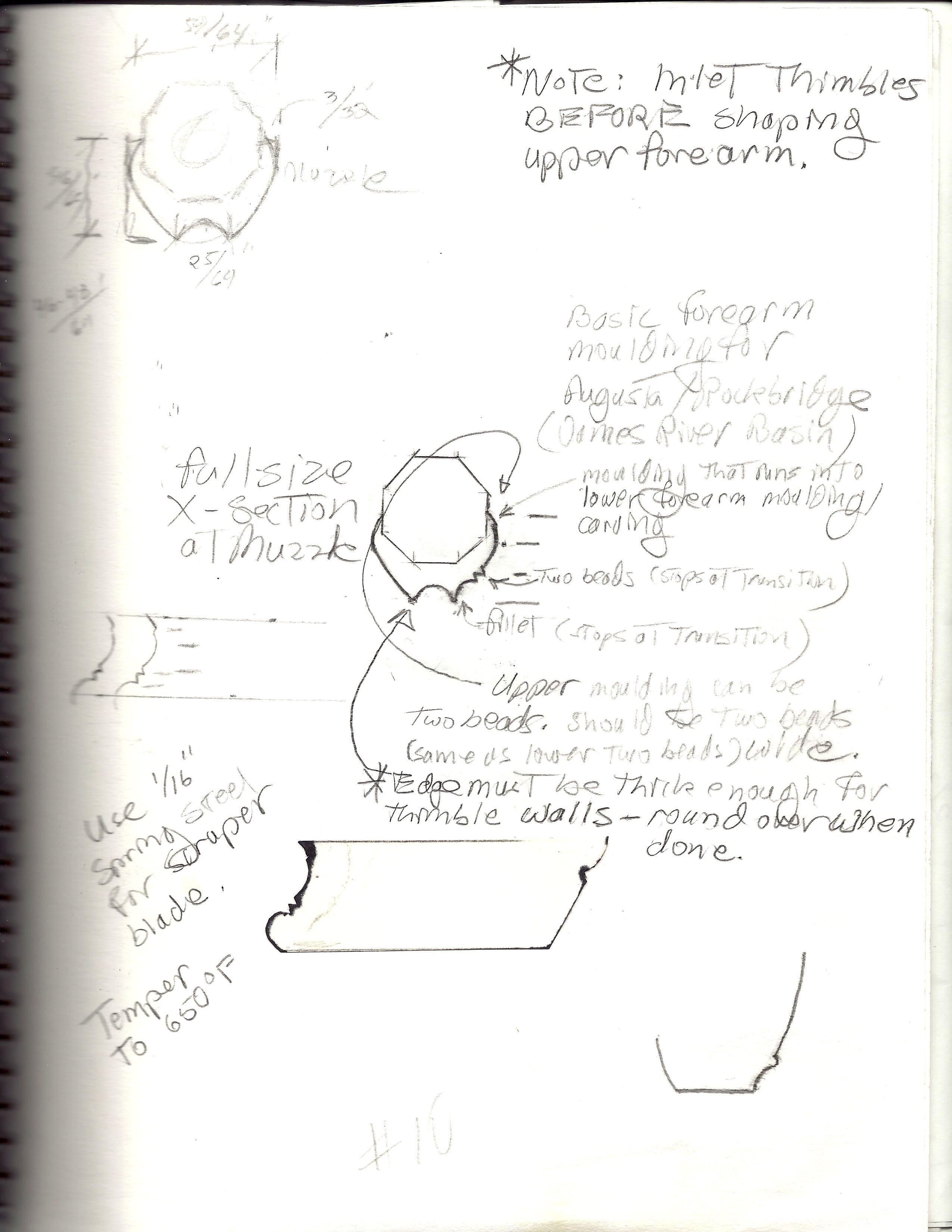1775-1785 Augusta/Rockbridge Co. Virginia Longrifle Templates & Layout Guide
This offering is my attempt to help the beginning gunmaker by making some of my layout tools available to them. As the title indicates, this drawing has templates for my interpretation of the 1775-1785 Augusta/Rockbridge Co. Virginia longrifles documented by Wallace Gusler in the Journal of Historical Armsmaking Technology (JHAT), Volume II.
This drawing contains my stock profile layout template for an Early Virginia longrifle along with my layout guidelines. The stock profile is basically the same as an early Lancaster, and I use this stock profile template for any colonial period longrifle. For a Pennsylvania longrifle, make the side walls of the lower forearm 1/8″ thick as opposed to 3/32″ for a Virginia longrifle. I have also included notes for the gunmaker describing the barrel pin placement for Virginia longrifles versus Pennsylvania rifles. Otherwise, basic stock layout and construction is the same.

Gunmaker Instructions for Using the Templates & Layout Guide
All the templates and plans are actual size. You just need to glue the paper templates to stiff cardboard such as poster board or mat board, and cut out the templates with an Xacto knife. You should cut along the outside edge of the lines. I would suggest that you print two copies of the plans; one to use for templates and the other for continued reference.
The image above shows the drawing that you will receive. The full size drawing is approximately 24″ x 75″. You can download the plan here; Download Full Size Plan This is an .pdf file and you will need Adobe Acrobat Reader to view it.Adobe Acrobat Reader Download
I want to make it clear that this offering is NOT intended to be a full set of plans, notes, and instructions necessary to build a complete rifle. It is merely an offering of some of the gunmaker tools necessary to produce a similar rifle. If you like the work I did with my Rifle #17, this will just help you layout a similar rifle from a stock blank and make a similar patchbox, side plate, thimbles, one piece nose piece, and upper forearm moulding. Someone who is building their first rifle from a blank, may find my approach to layout informative.
Copyright & Printing Information
I used to offer this plan for sale, both as a finished print and download. It never sold as well as I had hoped; and given that I don’t want to go to the expense to make this site secure enough for continued online sales, I am offering it as a free download for personal use. I still hold the copyright and it may not be used for any commercial purposes. You should be able to get the drawing printed locally for about $10 a sheet on standard bond. I get mine printed at the local FedEx Office store. I send them the file electronically via their web site and then pickup the prints when they are ready.




Mark, many thanks for making this available! I just printed a copy for myself…the amount of detail is remarkable, and it’s so well drawn I’m thinking of having one framed for display in my den!
Greg Pennell